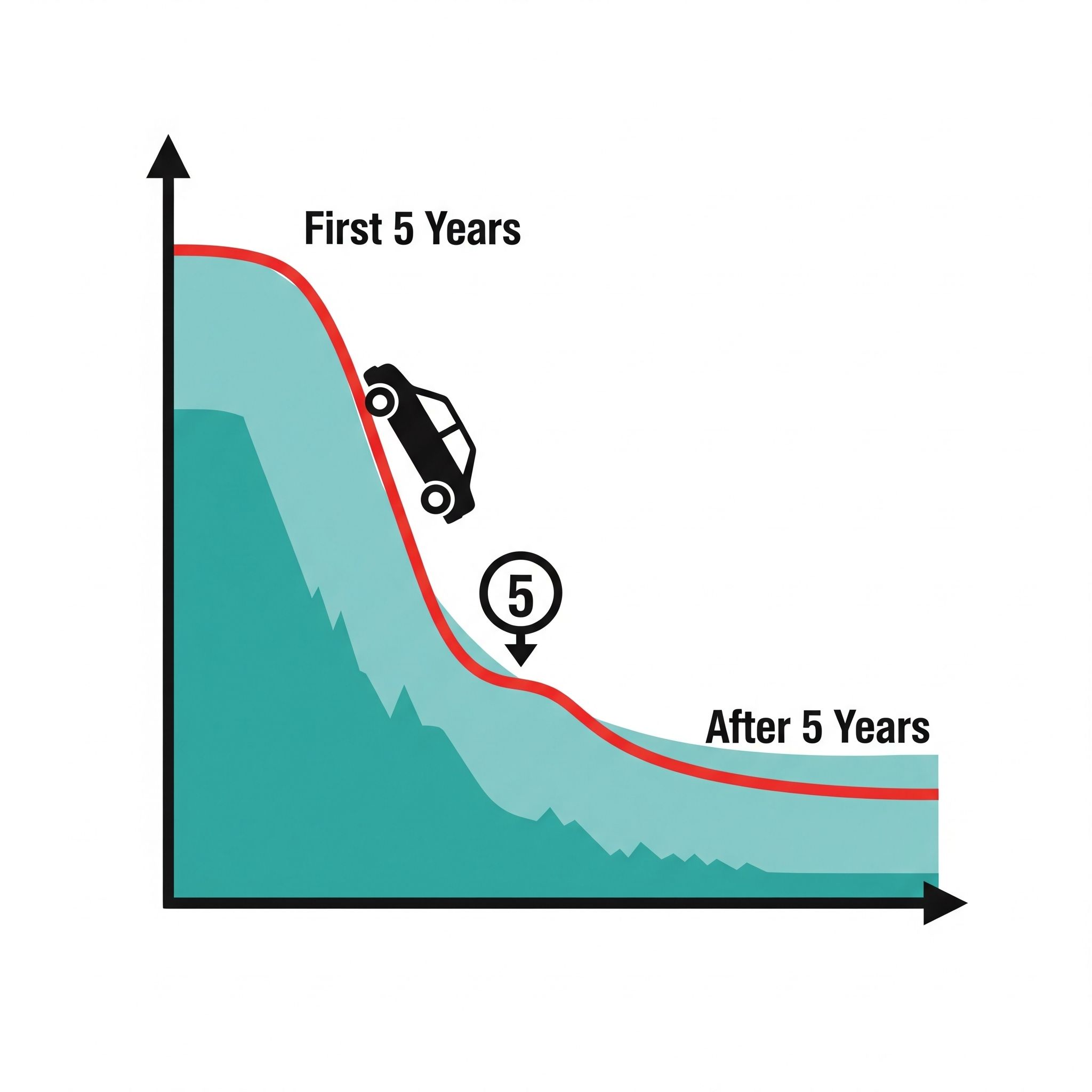The Silent Cost: How to Understand Car Depreciation and Fight It

You’ve saved, you’ve researched, and you’ve finally driven home in your new car. You’re enjoying the sleek design, the modern technology, and the new-car smell. But a hidden cost begins the moment your wheels touch the pavement outside the dealership: depreciation.
Depreciation is the single biggest expense of car ownership, a silent force that steadily reduces your vehicle's value over time. While it's an unavoidable reality for nearly every vehicle, understanding it can empower you to make smarter decisions and protect your investment.
The Cold, Hard Truth About Car Value
Most new cars lose a stunning amount of their value in the first few years.
- Year 1: A new car can lose 15-20% of its value in the first year alone. Some lose an immediate 10% just by driving off the lot.
- Years 2-5: The depreciation rate slows but remains significant, with most cars losing an additional 5-10% each year.
- After 5 years: On average, a car is worth just 40% of its original purchase price.
So, why does a car lose value so quickly? It's a combination of key factors that you can, to some extent, control.
The Factors That Affect a Car's Value
- Age and Mileage: These are the two biggest drivers of depreciation. The more miles you put on a car, and the older it gets, the more wear and tear it has, and the lower its value.
- Make and Model: Some vehicles are simply built to hold their value better than others. Brands like Toyota, Honda, and Subaru have a reputation for reliability and tend to retain their value due to high demand in the used car market. Conversely, many luxury cars depreciate faster because of their higher initial cost and more expensive maintenance.
- Condition and Maintenance History: A well-cared-for car is worth more. This includes:
- Regular, documented maintenance (oil changes, tune-ups, etc.).
- A clean interior and exterior.
- No major accident history (which is often revealed in a vehicle history report).
- Market Demand: Market trends play a huge role. Right now, reliable compact SUVs and trucks hold their value exceptionally well due to high demand, while sedans may depreciate more quickly.
How to Fight Back: The 5-Step Guide to Beating Depreciation
While you can't stop depreciation entirely, you can absolutely slow it down and protect your investment.
- Buy a "Smartly Used" Car: The steepest drop in a car’s value happens in its first year. By purchasing a well-maintained, one- or two-year-old vehicle, you let someone else take the biggest financial hit. You get a nearly-new car for a fraction of the cost.
- Choose a Model That Holds Its Value: Before you buy, do your research. Look for brands and models with a proven track record of strong resale value. Websites like Kelley Blue Book and Edmunds offer annual "Best Resale Value" awards that can guide your decision.
- Keep Your Car Immaculate: Treat your car like an asset. Keep up with all scheduled maintenance, and save every receipt. A car with a complete service history is much more valuable to a future buyer. Pay attention to the details: a clean interior, no dings or scratches, and a full tank of gas all signal a well-cared-for vehicle.
- Limit Your Mileage: While this isn't practical for everyone, keeping your mileage below the national average (around 12,000 miles per year) will help your car retain more value.
- Avoid Major Customization: Those custom paint jobs, loud exhaust systems, and aftermarket rims might look cool to you, but they can significantly limit your pool of potential buyers. The more your car appeals to the general public, the better its resale value.
Depreciation is a reality of car ownership, but it doesn’t have to be a major financial loss. By understanding how it works and being a proactive, informed car owner, you can ensure your vehicle's value doesn't disappear without a fight.